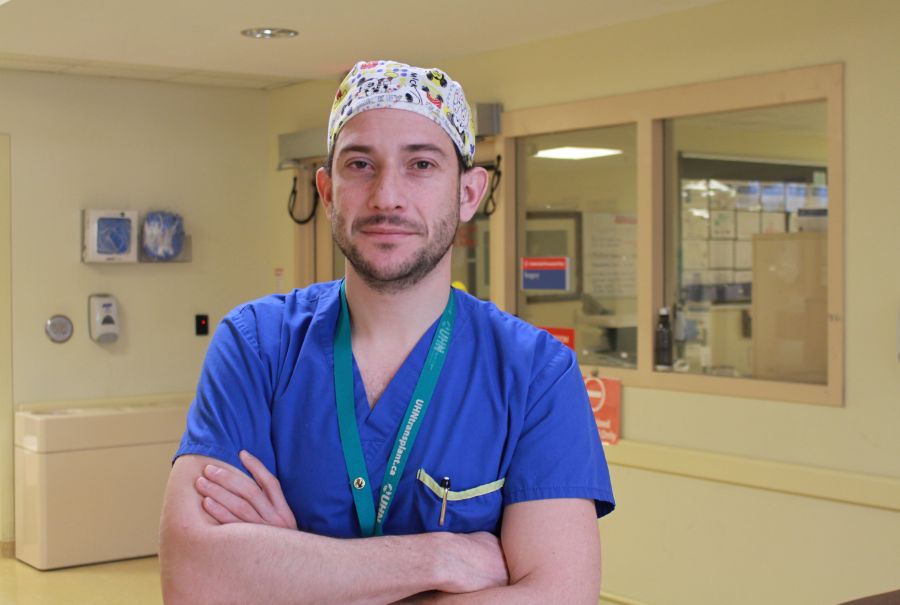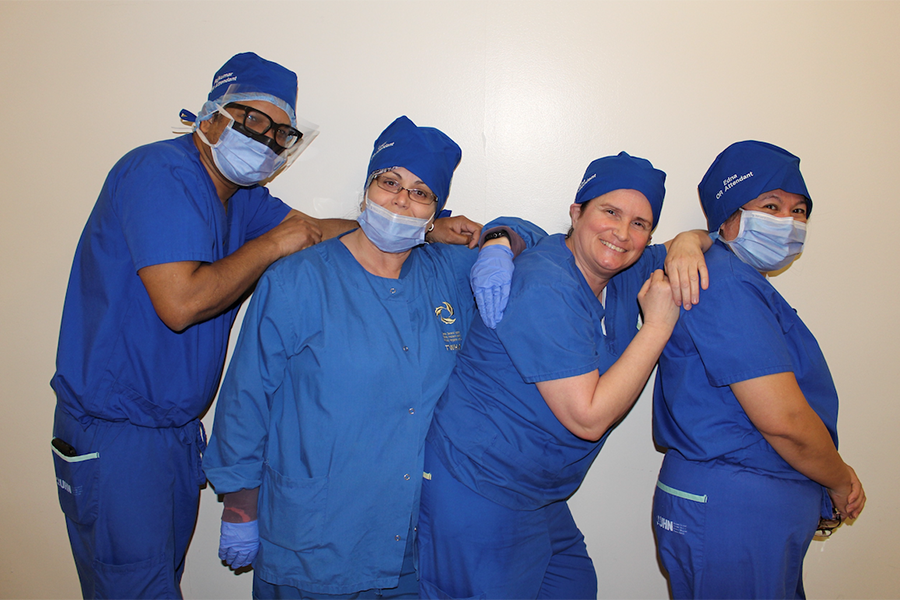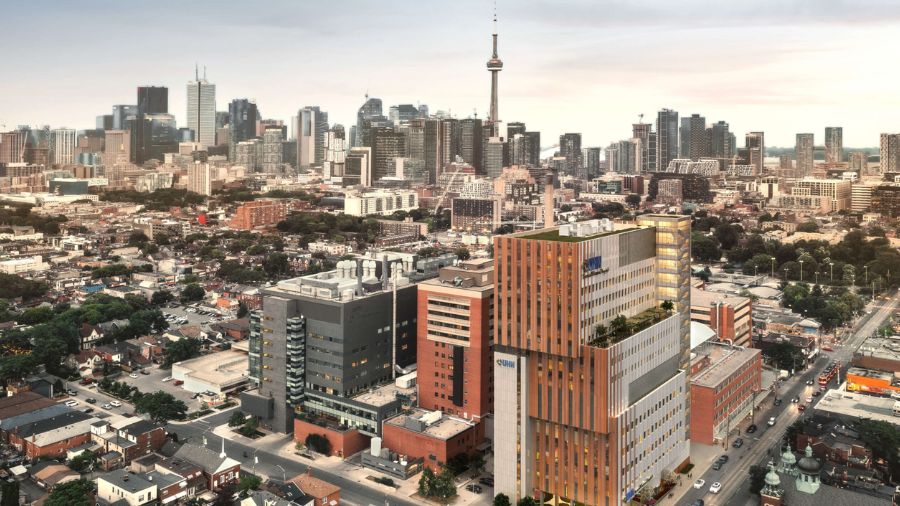Dr. Dean Elterman is reducing the length of hospital stays by using the GreenLight Laser in more procedures. (Photo: Tim Fraser)
By Mark Brown
GreenLight Laser procedures have been offering men relief from urinary challenges for years, but the tool may also be just what the Sprott Department of Surgery needs to relieve some of the strain on its surgical backlog.
Since this technology was invented in 2001, the minimally invasive procedure has helped treat benign prostatic hyperplasia (BPH) or prostate gland enlargement. It involves inserting a thin, flexible fibre up the urethra to deliver a high-powered laser to remove tissue from the prostate.
By the age of 50, half of all men will experience BPH, a condition that makes it difficult to urinate, which significantly impacts their quality of life. During the pandemic, though, many of the procedures to treat this condition were delayed or cancelled to free up space to treat patients with COVID-19.
While COVID-19 has eased, delays and cancellations continue to be a challenge. “There is a premium on having inpatient beds at the hospital,” says Dr. Dean Elterman, a urologic surgeon in the Sprott Department of Surgery who’s been using the laser at Toronto Western Hospital, part of University Health Network (UHN), since 2014.
Eliminating the need for overnight hospital stays is one of the many advantages of using the GreenLight Laser to treat BPH. With the 532-nanometre pulse of the laser, which gives the room a brilliant emerald green glow, Dr. Elterman can quickly and safely vaporize enlarged prostate tissue with less blood loss than other techniques and without requiring an inpatient bed after the procedure.

Freeing up inpatient beds
That’s not the case in all hospitals. When surgery is required, many still use a procedure called transurethral resection of the prostate (TURP), a technique developed in the 1930s to cut away a section of the prostate. These procedures have side-effects such as pain, bleeding, prolonged catheterization and longer hospital stays.
When UHN launched its Backlog Recovery Innovation Challenge (BRIC) in 2022 to reduce the length of post-surgery stays by shifting procedures toward an outpatient model, Dr. Elterman knew increasing access to GreenLight Laser treatments could be a solution. “That’s what’s going to save the hospital beds,” he says.
UHN agreed, awarding Dr. Elterman one of three $250,000 BRIC grants to expand the program to Toronto General Hospital. “They were doing 200-plus TURPs a year at Toronto General,” he explains. “That’s 200 to 300 hospital bed nights that are no longer going to be required.” He wants 80 per cent of TURP operations to become laser surgeries.
The grant will provide some much-needed relief to men waiting for this procedure. “Most patients are operated on and leave the same day, which they love,” says Fatemah Hussain, a physician assistant in the Division of Urology in the Sprott Department of Surgery. They see results immediately, and they can get back to living their lives, she adds.
Expanding the availability of the GreenLight Laser treatments has been something Dr. Elterman has sought since he first started performing the procedure. At the time, Sprott Surgery was the first centre in the city to provide this advanced surgical treatment. Today, Dr. Elterman is one of the country’s leading experts on the tool, helping Sprott Surgery become the first GreenLight Center of Excellence outside the United States.
UHN is also hoping to see immediate results from its expanded GreenLight Laser program. “Less time in hospital, less demands on resources means more time for other patients and procedures,” explains Hussain. “All of those things come into consideration, but it always comes down to what’s best for the patient.”
This article originally appeared in the 2023 issue of the Sprott Department of Surgery magazine. Read it here.


